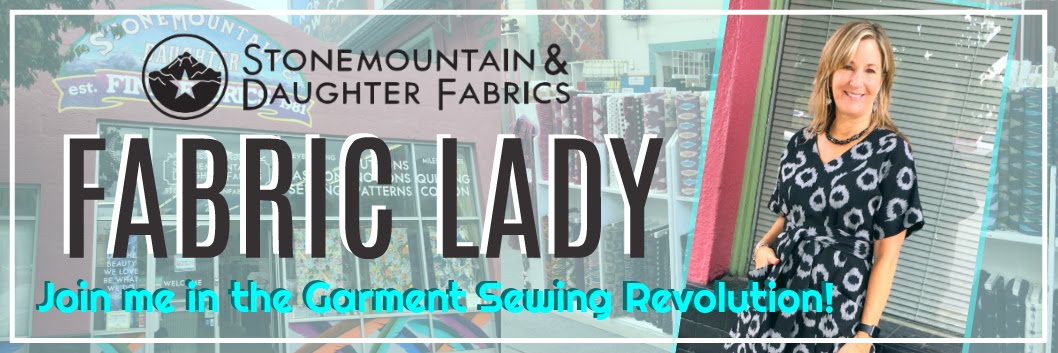If the break in your sewing routine has been long, just starting a new garment may cause a tiny elevation in your stress level. You see the pile of projects waiting for you to start (they've been there for two months!) and if you're like me, you immediately start procrastinating...cleaning the oven or sorting socks. It's not that we've forgotten how to cut out a pattern or sew a seam - it's just that whole "starting" thing.
My favorite seamstress had a couple of thoughts on "starting", since she's been traveling and away from her machine...with MY pile of fabric waiting in her sewing room. She contends that the secret to starting is actually STARTING! But sometimes, putting in some time to set the mood for sewing helps the starting - it's all about finding the zen of sewing.
1) Get your space ready to sew...is it clean? Is it organized? Clearing the sewing table of magazines and junk mail, dusting your machine and getting your tools ready is considered "starting".
2) If watching cooking shows relaxes you and you can do two things at once, then by all means turn on some noise...for Laurel, a little soft jazz to sew by creates a nice (and calming) "starting" atmosphere.
3) If you have a lot of projects to start, don't go for the silk dress or the wool coat right away - choose something simple: an easy fabric with a pattern you know you're going to enjoy; nothing too complex. We loved Natalie's top and had picked out some great cottons to make this Very Easy Vogue 8815. This would be a great place to Start.
 |
| Natalie is an amazing muse inspiring me with her Vogue 8815 top! |
4) Go ahead...START. Just do it. (Once the "Starting's" over, you'll remember why you love to sew).
We chose an easy fabric to sew and fit - our beautiful cotton voile in two different prints to add a unique and funky flair for Fall!
After a few darts and some seams, your sewing zen is back - something like a decorative zipper doesn't seem so intimidating. For my top, Laurel "Googled" How to sew an exposed zipper and found a Threads article to get a few pointers - remember, the Internet is your friend:)

This blouse pattern is just as the name implies...very easy. The neckline has no facing, just a single fold bias tape edge. The hemline on the peplum is curved, so that same bias tape makes hemming a cinch.
And just like that , you've got your sewing groove back on track...ready to tackle that silk!
Welcome back, Laurel!! Looks like you brought back lots of inspiration from your trip to France! Please pop over to Laurel's blog to see where she went "In search of Style"
 |
| I can't wait to try this on! Natalie and I will have so much fun wearing our funky tops on the same days. Look at that wonderful zipper detail on the back outside of my top!!! We are going to be showing more ways to use our new designer zippers on my new fall wardrobe - stay tuned! What fabulous fabrics would you combine for this versatile top? It can be cotton, silk, rayon and even a lightweight wool! |
Creatively Yours,
Suzan
















